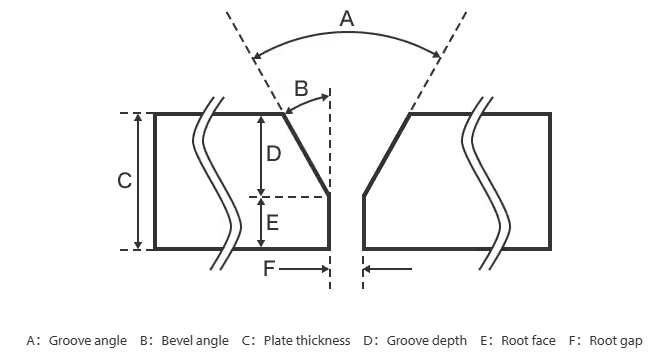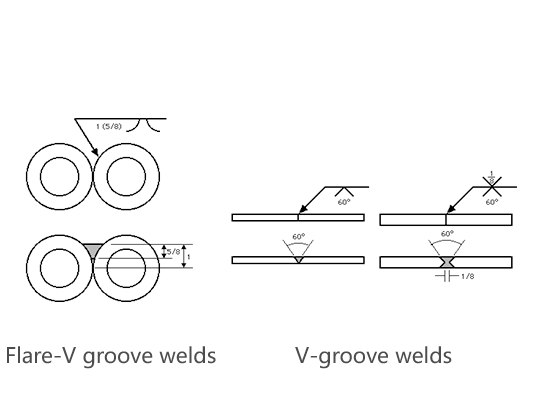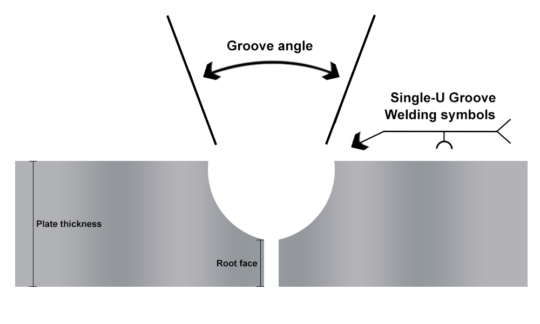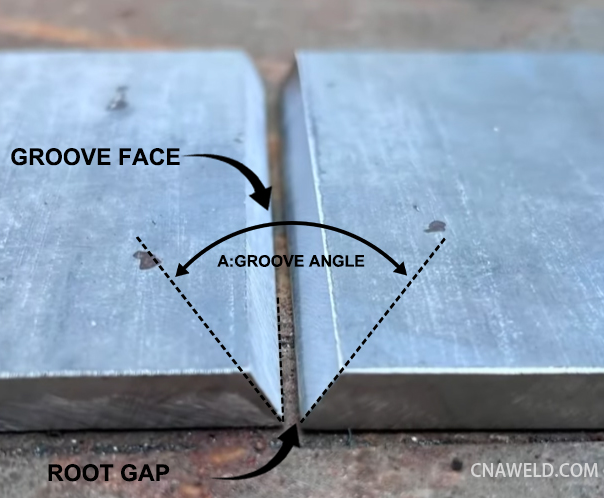What You Need to Know About Vee Groove Weld: Techniques, Benefits, and Applications
When it comes to welding, the Vee groove weld is a technique that stands out for its efficiency and reliability. Understanding this welding method can greatly enhance your manufacturing processes, making it crucial for industries like construction, automotive, and shipbuilding. In this article, we will delve into the techniques involved in Vee groove welding, explore its benefits, and examine its various applications.
Inhaltsverzeichnis
UmschaltenWhat is Vee Groove Weld?
A Vee groove weld is a type of joint preparation used primarily for butt welds. It features a groove that is shaped like a “V,” allowing the weld metal to be deposited in a way that maximizes penetration and strength. This welding technique is particularly advantageous when working with thicker materials, making it a preferred choice among welders.

V-shaped groove
Source:https://www.keyence.com/ss/products/measure/welding/trouble/groove.jsp
Techniques for Vee Groove Welding
To perform a Vee groove weld effectively, several techniques are involved. The first step is joint preparation. A grinder or Plasma Cutting can perform this job. Air Arc Gouging is also a good choice, it removes metal effectively. The materials should be cut at an angle to create the V-shape. For example, if you are joining two metal plates, you would typically cut them at a 45-degree angle.
After joint preparation, the next step is to set up the welding equipment. Depending on the type of welding—whether it’s MIG, TIG, or stick welding—different machines and settings will be required. A MIG welder, for instance, offers a continuous wire feed, which can be quite effective for producing clean and efficient Vee groove welds.
Once the equipment is ready, it’s time to maintain the right technique during welding. It’s essential to keep a steady hand and appropriate speed to ensure consistent bead formation. This results in a weld that is not only strong but also visually appealing. Many welders find that using a weaving technique across the Vee groove can further enhance penetration and fill the joint more effectively.
Example of Techniques in Action
Consider an automotive manufacturer that needs to join two large steel panels for a vehicle frame. By using the Vee groove weld technique, the workers can ensure that the joint is robust enough to handle the stresses the vehicle will encounter. The initial preparation of cutting the steel panels into a V shape allows for a deep penetration of the weld, resulting in a more durable bond.
Additionally, the use of proper welding settings, such as voltage and feed speed, can greatly enhance the quality of the weld. After the welding is complete, a quick visual inspection can provide assurance that there are no voids or excessive spatter.
Benefits of Vee Groove Weld
Now that we understand how to execute a Vee groove weld, let’s discuss why this method is often the go-to choice for many professionals.
1. Strong Joints: Vee groove welds create strong, durable joints that are resistant to various forces, making them ideal for structural applications. For example, bridges and high-rise buildings often utilize this weld due to its ability to withstand heavy loads.
2. Versatility: This welding technique is suitable for various materials, including steel, aluminum, and even some alloys. Its adaptability ensures that different industries can benefit from its application, whether in heavy machinery or lighter products.
3. Improved Penetration: Vee groove welding allows for deeper penetration than flat or square grooves. This characteristic is particularly useful when dealing with thicker materials, ensuring that the weld fuses properly and holds strong under pressure.
4. Aesthetic Finish: Apart from its robustness, Vee groove welds can also provide a cleaner appearance. This aesthetic advantage can be crucial for products meant for public display, such as automotive parts or architectural features.
Applications of Vee Groove Weld
The applications of Vee groove weld are numerous and span across several industries. Here are a few notable examples:
– Construction Industry: Vee groove welding is extensively used in the construction of steel frameworks for buildings. The ability to create strong joints ensures that the structures are safe and can endure the test of time.
– Automotive Manufacturing: In car assembly lines, Vee groove welds are widely used for chassis and body part assemblies. The reliability of this weld method can greatly affect a vehicle’s overall performance and safety.
– Shipbuilding: The marine industry also benefits from Vee groove welds. Ships require sturdy joints to withstand the harsh marine environment, and this welding technique meets that need effectively.
– Heavy Equipment: Industries that produce heavy machinery, such as bulldozers or cranes, utilize Vee groove welding for its strength and resilience, ensuring that their products can perform in the toughest conditions.
Abschluss
In conclusion, the Vee groove weld is a powerful technique praised for its strength, versatility, and efficiency. Its ability to create durable joints makes it an essential method in various industries such as construction, automotive, shipbuilding, and heavy equipment manufacturing. The advantages it offers, whether in terms of durability, aesthetic appeal, or quality of the finished product, ensure that it remains a popular choice among welders.
As you consider your options in welding techniques, keep the Vee groove weld in mind. Its impressive qualities might just be the key to taking your projects to the next level. Ultimately, understanding and mastering this technique can bring about significant improvements in your welding outcomes, making it a worthwhile investment for any professional. Whether you’re in a workshop or on a construction site, the benefits of Vee groove weld are substantial, and its applications are virtually limitless.
FAQs:
Q:Difference Between Flare V-Groove Weld and V-Groove Weld
The main difference lies in their joint geometry:
- Flare Groove Weld: Has a curved, flared shape, typically used for joining rounded surfaces like pipes or tubes.
- V-Groove Weld: Has a “V” shape with straight edges, commonly used for joining flat or angled surfaces, especially in thicker materials.

Welding Symbols
Source:https://www.millerwelds.com/resources/article-library/deciphering-weld-symbols
In short, flare grooves are for curved joints, while V-grooves are for flat or thicker joints.
Q:What are the differences between V-groove and U-groove welding, and how do I choose?
The choice between V-groove and U-groove welding depends on several factors:
- Material Thickness: V-grooves are commonly used for most materials, while U-grooves are typically reserved for thicker materials (over 1 inch).
- Cost: V-grooves are cheaper to prepare using flame or plasma cutting, whereas U-grooves often require machining but save on filler material for thicker joints.
- Defect Risks: U-grooves can have issues like lack of fusion or porosity due to steep sidewalls but produce less heat input, making them better for crack-sensitive materials.
- Applications: V-grooves are versatile and widely used, while U-grooves are chosen for specific needs like minimizing heat input or reducing residual stress.U-Groove


